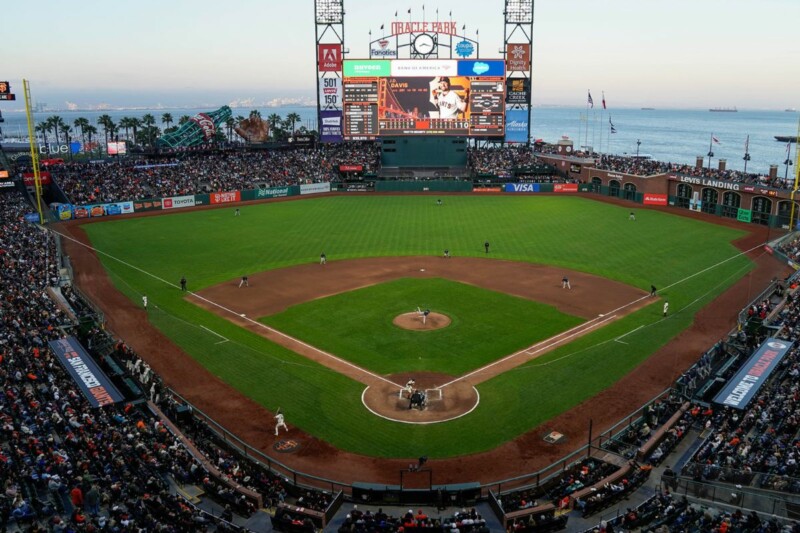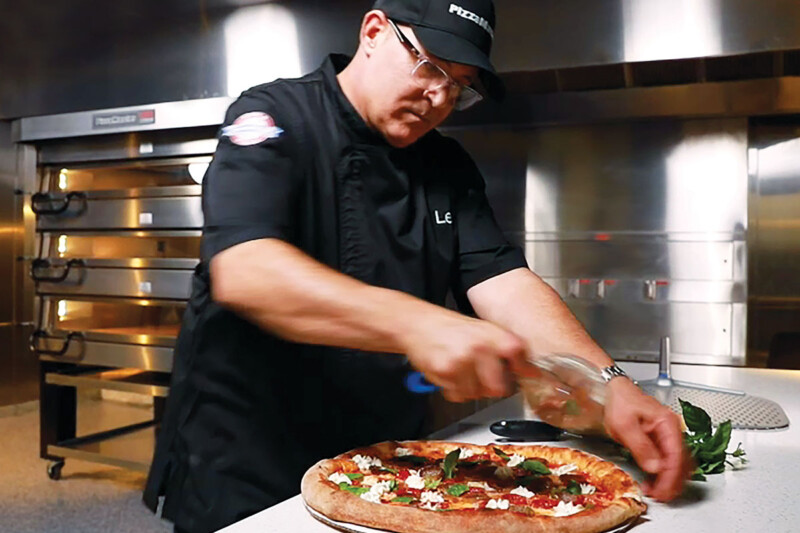Equipping for Today’s Pizza Operation
Labor-saving and hands-off equipment is transforming today's pizza operations.
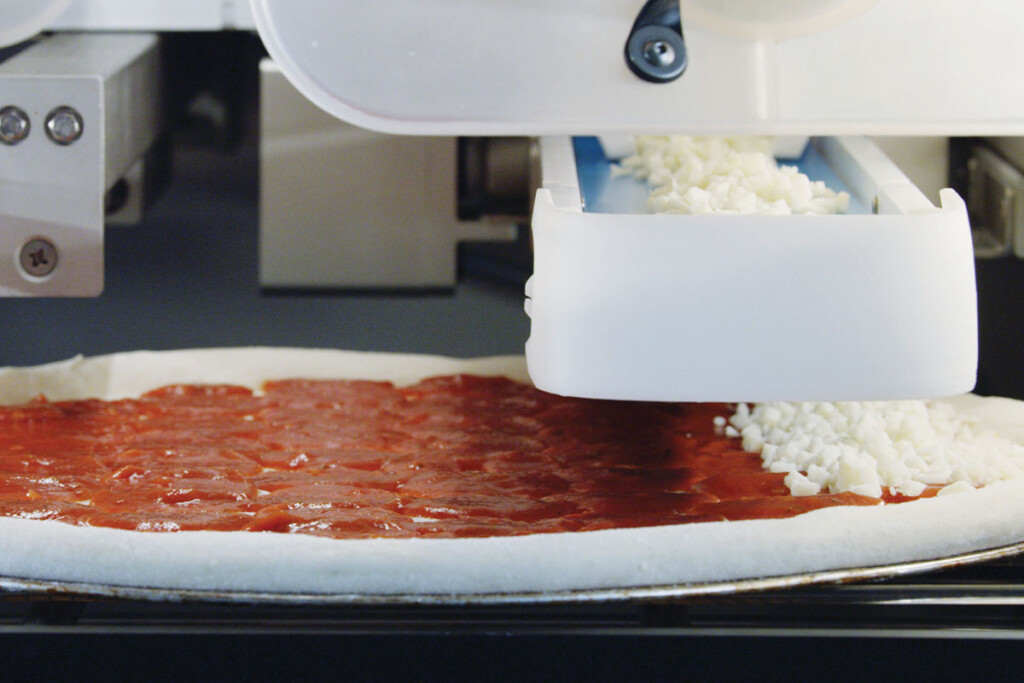
Pizza is a relatively mature restaurant segment, one that saw consumer spending grow 3% in 2019, according to Technomic. That meant it underperformed limited-service dining overall, which saw growth of 4.8% in 2019.
Then the pandemic hit. Limitations on dine-in service as well as health concerns put a premium on takeout and delivery meals—and the pizza segment as a whole was well prepared to capitalize on the opportunity.
“Given that it already had a strong tradition of delivery and of takeout, pizza [sales] during the pandemic has excelled,” says David Henkes, senior principal at Technomic.
But not all pizza operators have benefited equally. Henkes notes that independent pizzerias with a strong dine-in business have fared worse than chains like Domino’s, Papa John’s and Little Caesars. Preliminary numbers show those three chains were up 16%, 15% and 2.5%, respectively, in sales in 2020, according to Technomic. Overall, pizza chains outperformed the broader pizza category, mostly thanks to their already-established online ordering, mobile payment and customer-loyalty programs that provide diners a frictionless off-premise experience.
Given the strong sales chain pizza companies saw last year, Henkes expects they’re taking share from independent pizzerias, limited-service restaurants and potentially even full-service restaurants. Post-pandemic, the restaurant industry’s trend toward more chain restaurants at the expense of independents is likely to play out in the pizza segment as well, he says.
To-Go Is Where It’s Going
Given such competition, anything operators can do to gain efficiencies in the delivery and takeout game has become paramount.
“The big thing right now with the folks in the pizza business is throughput,” says Jay Bandy, president of Goliath Consulting Group in Norcross, Ga. “It’s about efficiency in a small space.”
When in the past dine-in customers might have valued the visual appeal of a wood-burning oven or hand-tossed pies, takeout and delivery orders make that ambiance much less important. The desire now is for easy-to-maintain, labor-saving and efficient equipment.
“Before, pizzerias wanted to show off the oven. Now because they’re doing ghost kitchens or just to-go sales, the customer doesn’t see that equipment,” says Alessio Lacco, a restaurant consultant specializing in pizza who also runs a catering business called Atlanta Pizza Truck. “Pizzerias now want equipment that’s easy to manage, that doesn’t require labor; it just makes the pizza.”
Effectively, efficiency has replaced visual authenticity when it comes to pizza makers’ priorities.
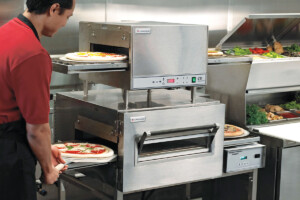
Conveyor ovens crank out high volumes of pizza. Courtesy of Lincoln.
Baked-in Efficiency
Several styles of ovens are speeding up pizza production while keeping labor costs low.
Rotating and conveyor-style ovens are both seeing an uptick in interest, according to the operators we spoke with, because they don’t require as much attention and manual manipulation of the pizzas while they cook as more traditional ovens. That allows operators to cut down on kitchen labor ahead of any rise in the federal minimum wage. Fewer employees in the kitchen also allows for better social distancing.
Brian Tondryk, owner and founder of Bartoli’s Pizza in Chicago, says his older deck ovens have to be “babysat”—with an employee turning or moving the pies—or the pizzas inside will burn. He says he’s seen conveyor-style ovens, with heating elements in the top and bottom, as a solution to that problem, though many remain too expensive for his budget.
Bandy says he’s also seen an increased interest in plug-and-play countertop deck-type ovens, especially from full-service and sandwich shop operators who haven’t traditionally offered pizza. These ovens are thousands of dollars cheaper than traditional pizza ovens, and cook pizzas quickly with little training required. Those ovens aren’t brand-new technology, but Bandy says they’re becoming more popular as businesses look for new menu items that are well-suited for takeout and delivery.
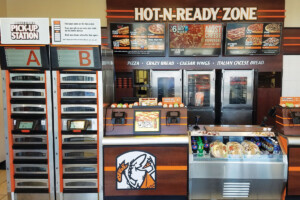
Pickup lockers create a no-contact way for customers to grab orders. Courtesy of Little Caesars Pizza.
Fewer Cooks in the Kitchen
Easy-to-use pizza presses and rollers not only save time in making pizza itself, but cut down on the training employees need to make quality pizzas. Lacco says he’s seen more of his consulting clients investing in those tools, whereas even just a few years ago, stretching dough by hand was still preferable.
“Before, they wanted to show off people actually working. Now, they want to be sure they can make the product because they don’t know if their employee will come to work or if they can find someone to fill a job,” he says.
Presses and rollers can speed up dough rolling, but Lacco says they’re still not perfect at stretching artisanal, Neapolitan-style pies for example. At Colorado-based fast-casual chain Mici Handcrafted Italian, though, a custom, 3D-printed pizza press has sped up service and allowed for greater staffing flexibility on the pizza station.
Cook-chill systems are just starting to gain traction in the pizza sphere as a labor-saving way to prep large quantities of toppings at once. Blast chilling and water-bath chilling are the two main methods, both of which can extend the safe shelf life of precooked pizza toppings. Bandy says he was especially impressed with a web-connected combi oven and blast chiller duo that cooks and chills food. The two pieces are in full communication with each other; for example, the combi oven automatically alerts the blast chiller to prepare for chilling.
“One machine talks to the other, so you can put ingredients in overnight. The oven slacks it out, cooks it and the other piece chills it,” Bandy explains. “It doesn’t take a lot of skill from your labor.”
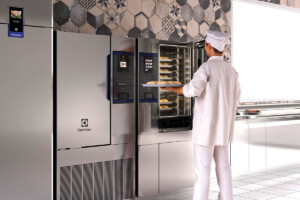
A web-connected combi oven and blast chiller can help reduce labor when preparing large quantities of pizza toppings. For example, the combi oven can alert the blast chiller to prepare for chilling.
The Future is High-Tech
As wages rise and the restaurant labor pool remains tight, technology will likely take on even greater importance in pizzerias of the future. Already, pickup lockers that customers can unlock with their phone, for example, are reducing strain on the back-of-house and speeding service. Current realities like AI-enabled phone ordering systems and digital pizza delivery tracking software are further harbingers of a higher-tech future.
Like automats developed partially as a response to the Spanish flu epidemic of the early 20th century, Bandy says entirely robotic pizza kitchens may be born out of our current pandemic. A pizza-making robot generated a flurry of attention and accolades at the technology event CES in Las Vegas last year.
“The digital space is helping folks streamline their ordering process and limiting the service staff that they need,” Bandy says. “All the people we know on the AI vendor side are busy as heck.”

Courtesy of Jet’s Pizza.
Orders in One Spot
Beyond kitchen equipment, point-of-sale systems that integrate online orders are one of the more valuable tools in a pizzeria’s arsenal right now.
“Nobody’s calling to order food,” says Vito Sorrentino, owner of seven Jet’s Pizza locations in Chicago.
When the pandemic dramatically increased the number of orders placed via third-party apps, Sorrentino’s employees couldn’t keep up by manually entering each order to the POS. His pizzerias eventually signed up for a service that integrates those ordering platforms to the POS automatically.
“Now we don’t have to worry about making mistakes entering orders by hand,” he says.
That allowed him to cut two employees per shift, reducing labor costs.
David Henkes of Technomic says this type of digital and mobile ordering technology is what’s given some of the largest pizza chains a huge head start during the pandemic.
“Technology and equipment, that’s where the investment for a lot of these pizzerias is going to go: What technology do we need to fulfill orders quickly?”
RELATED CONTENT
- Advertisement -
- Advertisement -
- Advertisement -
TRENDING NOW
- Advertisement -
- Advertisement -
- Advertisement -

